
Traditional Chinese Medicine: Nourishing the lungs
The “Five-elements” theory (五行学说) of Traditional Chinese Medicine (TCM) was derived from a Chinese medicine Encyclopedia titled Inner Canon of the Yellow Emperor (中华民族医学典藏 《黄帝内经》). According to the book, the body system is divided into five vibrational families. They are Wood (木), Fire (火),Earth (土), Metal (金) and Water (水).
TCM explored the ancient concepts of Yin (阴) and Yang (阳) as well as the five elements of nature (Wood, Fire, Earth, Metal and Water) to show how internal organs, systems and structures are categorised and connected. Based on Chinese medicine theory, the organs of human body follow a similar Wu-Xing (五行)pattern called Zang-Fu (脏腑). The five elements are related to a specific organ system known as five Zang (五脏) and five Fu(五腑). Each Zang (脏) is paired with a Fu(腑), and each pair is assigned to one of the five elements (五行).
Wood refers to the liver (Yang) – the circulatory system and blood storage system; Fire refers to heart (Yang) – the cardiovascular system; Earth refers to spleen (Yang) – the digestive system; Metal refers to lungs (Yang) – the respiratory systemand Water refers to the kidney (Yang) – the urinary system. Based on the “Five-elements” theory, the interactions between the internal organs require two major relationships. One is known as “mutual generation (相生)” and the other is known as “mutual overcoming (相剋)”. To maintain good health, the five elements in one’s body should remain in perfect balance.
The condition of a lung is usually reflected on the skin, fur, trachea, nose and large intestine according to its health degree. In other words, body parts such as lung, skin, fur, large intestine, trachea and nose fall under the "Metal" element category. For instance, if the physiological function of the lungs is normal, one will have smooth skin and healthy hair. If the lungs do not function normally, it may cause stuffy nose and influence one’s sense of smell. Some might even experience shortness of breath, mucus or snot if their lungs do not function normally.

The five elements are paired with five different colours
Five different colours (green, red, yellow, white and black) are paired with the five elements. Green belongs to the wood element (liver), red belongs to the fire element (heart), yellow belongs to the earth element (spleen), white belongs to the metal element (lungs) and black belongs to the water element (kidney).
This article explains the colour “white” which belongs to the “Metal” element (lung), and foods that help to nourish lungs and protect it from viral infections. The “white-colour foods” stated below are good for the respiratory system as described in the Inner Canon of the Yellow Emperor, “肺在体合皮,其华在毛,在窍为鼻,在志为悲,在液为涕。肺与大肠为相表里”.
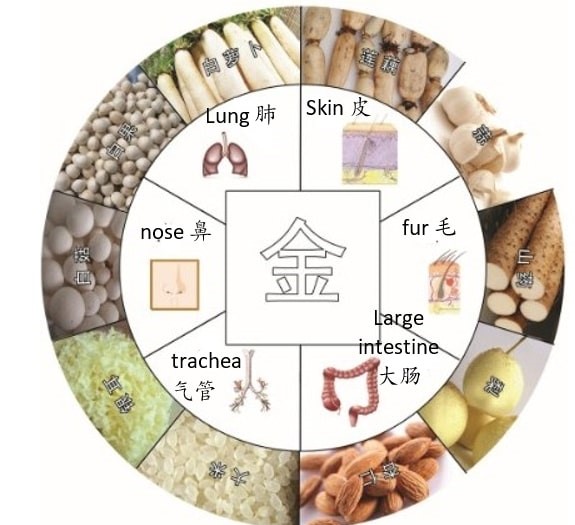
Foods that help to nourish the lungs
Tendrilleaf Fritillary Bulb (Chuan Bei Mu, 川贝母,Fritillaria cirrhosa) tastes bitter and is slightly cold in nature with a meridian affinity to the heart and lung. The meridian system (经络系统) is a concept in TCM that links different areas of the body together and allows a life-energy known as Qi (气) to flow. The Tendrilleaf fritillary bulb helps to clear heat, moisten lungs, resolve phlegm and relieve cough in the lungs. It can be steamed together with Asian pears and served as dessert to prevent dry cough and dry throat. This combination will help in dissolving phlegm, clearing heat while moistening and tonifying the lung’s Yin. Lung-Yin deficiency has symptoms like dry cough, bloody cough, hoarseness and irritated throat.

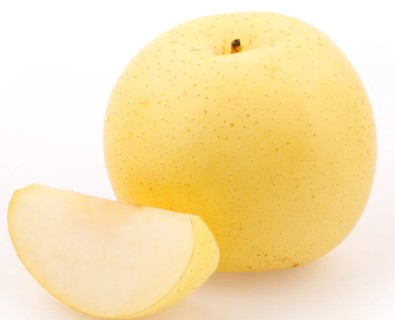
Tendrilleaf Fritillary Bulb (left) Asian Pear (right)
Coastal Glehnia Root (Bei Sha Shen, 北沙参, Glehnia littoralis) tastes sweet and it is slightly cold in nature. Its meridian affinity belongs to the lungs and stomach. It helps to nourish the lung’s Yin, clear heat in the lung and it is especially useful for dry cough (with little phlegm), bloody phlegm, dryness in the throat, and hoarseness due to Lung-Yin deficiency.

Coastal Glehnia Root
White Lablab Bean (Bai bian dou, 白扁豆, Dolichos lablab L.) tastes sweet with a slight hint of bitterness. It belongs to the spleen and stomach meridians. It can help to tonify spleen and eliminate dampness. The raw bean, however, is toxic and should be cooked before use.
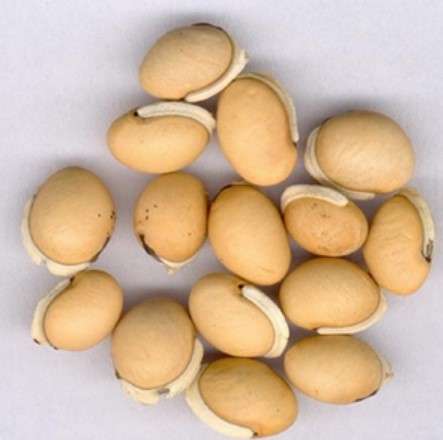
White Lablab Bean
Dwarf Lilyturf Tuber (mai dong, 麦冬, Radix Ophiopogonis) tastes sweet. It is also slightly bitter and slightly cold in nature. Since, it belongs to the lung and stomach meridians, Dwarf Lilyturf Tuber helps to nourish the Yin in the stomach, lung and heart. Besides, it also helps to calm the heart, induce tranquilization and clear the heat in the stomach, lung and heart. The symptoms of Stomach-Yin deficiency are poor appetite, abdominal pain and feeling loaded after eating. Some may also experience dry mouth, dry throat and thirst but do not have the desire to drink. The symptoms of heart-Yin are palpitations, insomnia, vivid dreams, anxiety, restlessness and poor memory.
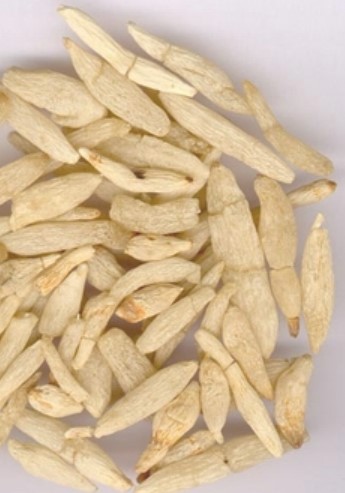
Dwarf Lilyturf Tuber
The Tendrilleaf Fritillary Bulb, White Lablab Bean and Dwarf Lilyturf Tuber fall under the “white” colour category and are useful for Lung-Yin deficiency syndromes. The syndromes of Lung-Yin deficiency are dryness in the nose and throat, as well as dry cough (with a little phlegm). Tendrilleaf Fritillary Bulb, White Lablab Bean and Dwarf Lilyturf Tuber can be used to make soup by boiling them together for three hours, with sweet dates and pork/ chicken.
Lily Bulb (Bai he, 百合,Lilium lancifolium Thunb.) tastes sweet and it is slightly cold. It has a meridian affinity to the lung and heart. It helps to nourish the Yin of the lung and the Yin of the heart. It also clears heat from the lung and heart. Other medical effects include relieving cough and dispelling phlegm, calming the heart and inducing tranquilization. Lily bulb can be served in the soup along with Coastal glehnia root (北沙参), Solomonseal Rhizome (Yu Zhu, 玉竹), snow fungus (雪耳), sweet dates and pork/ chicken by boiling them for three hours.
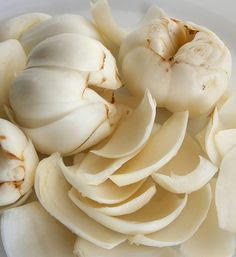
Lily Bulb
Most of the foods might belong to more than one element at a time. By understanding the “Five-elements” theory, we will be able to find possible curative foods that help to nourish deficient organs.
Article is written by Dr Teh Lai Kuan, a Chinese Practitioner and also Assistant Professor from the Department of Allied Health Sciences at Faculty of Science, Universiti Tunku Abdul Rahman. To contact her, email: tehlk@utar.edu.my
© 2020 UNIVERSITI TUNKU ABDUL RAHMAN DU012(A).
Wholly owned by UTAR Education Foundation Co. No. 578227-M LEGAL STATEMENT TERM OF USAGE PRIVACY NOTICE